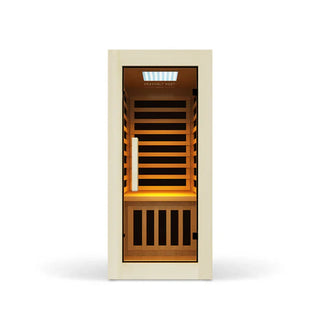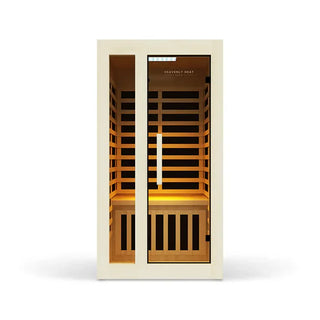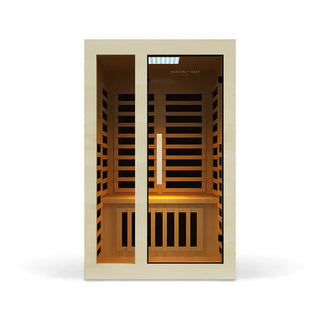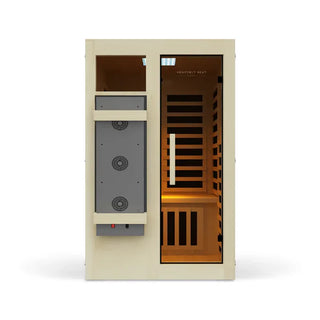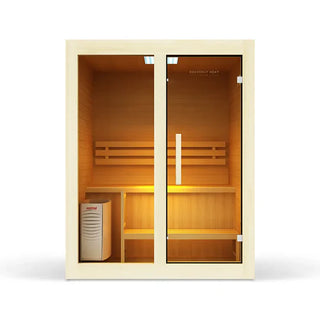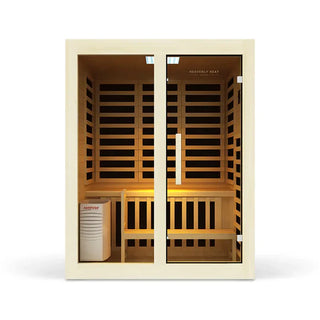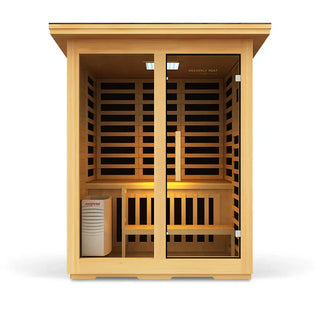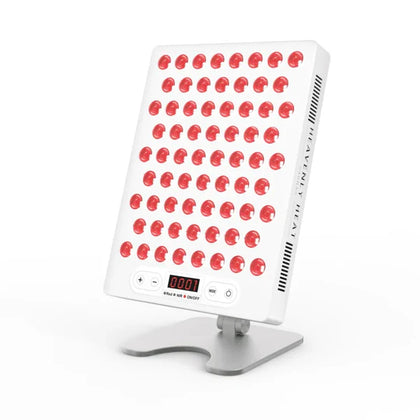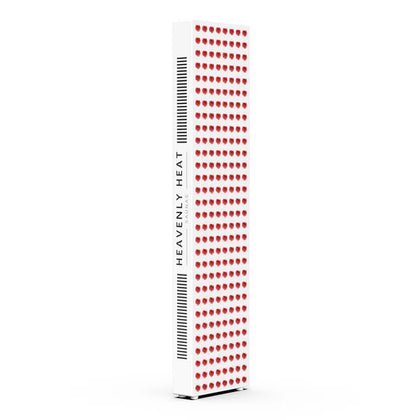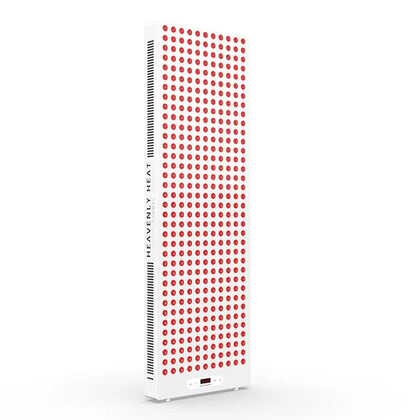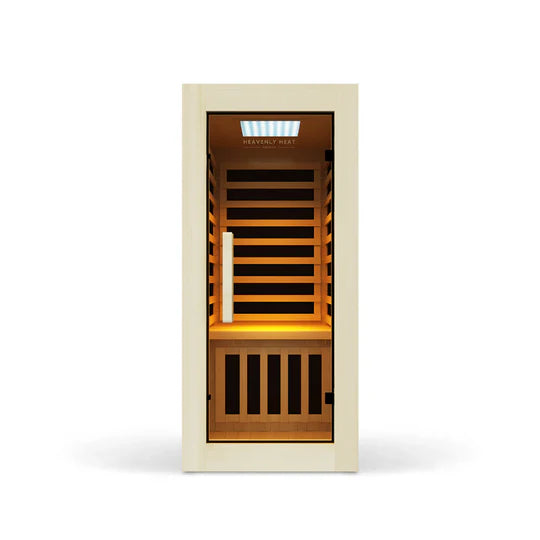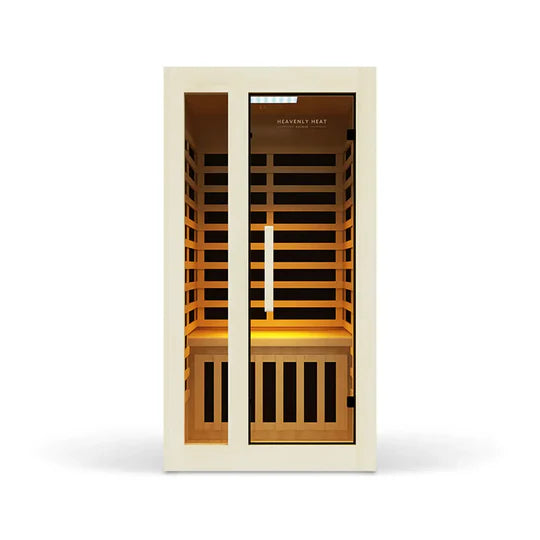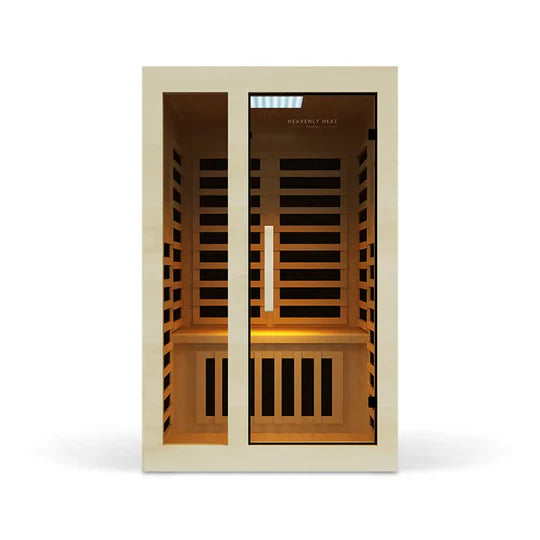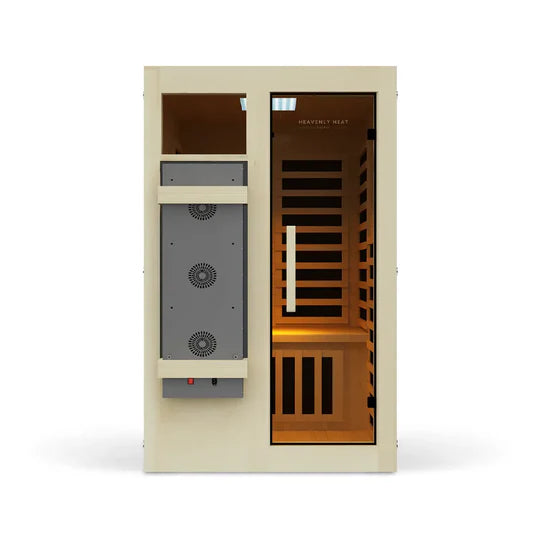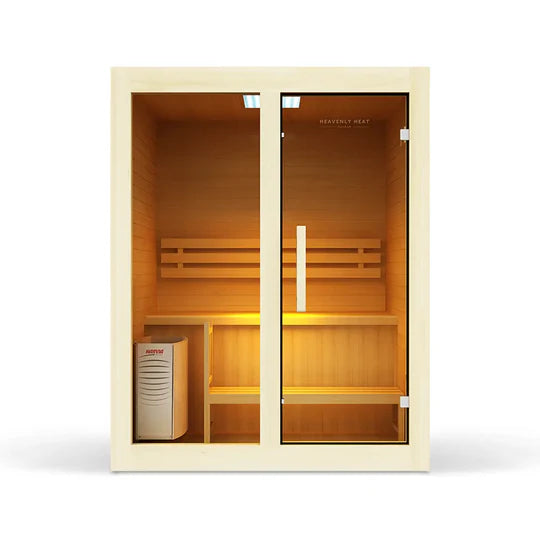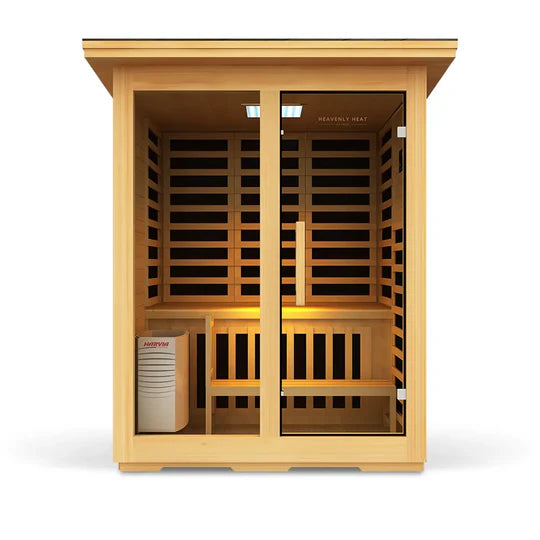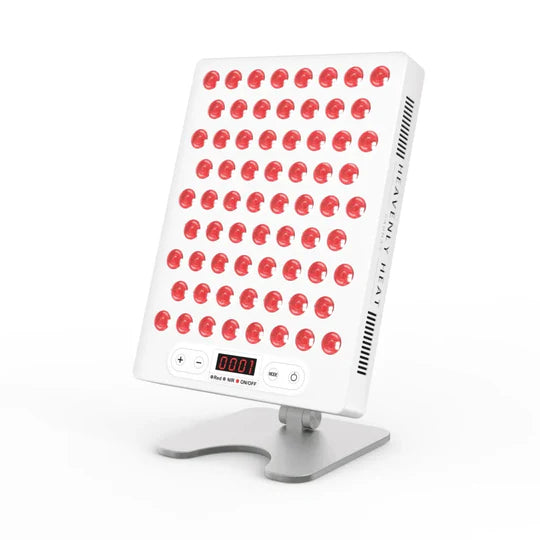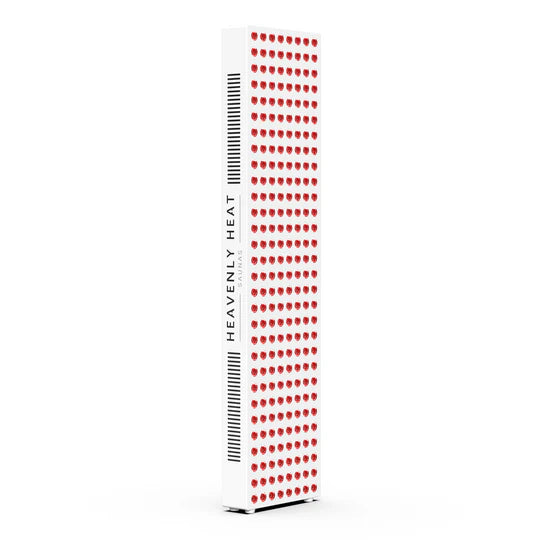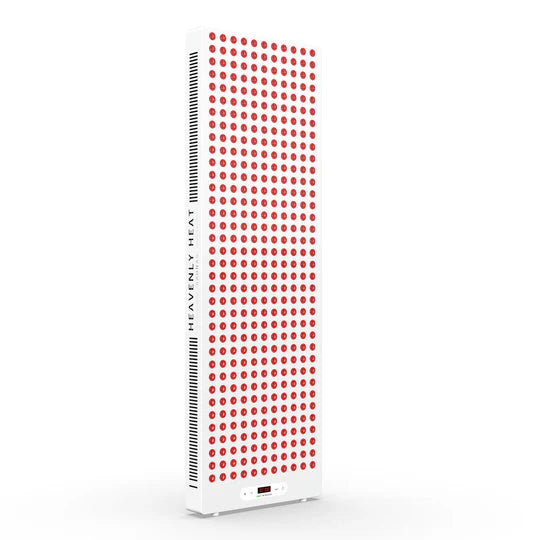Sauna Wood Types: Best Wood for Your Sauna Interior

Table of contents
Choosing the right wood for your sauna is crucial. The wrong choice can lead to warping, cracking, or even unpleasant odors over time.
Imagine investing in a sauna only to watch it degrade. Don't let that happen. This guide covers the best sauna woods including Cedar, Hemlock, and more so you can build a durable and relaxing retreat.
Key Takeaways
-
Choosing the right sauna wood ensures durability, safety, and heat resistance.
-
Cedar, hemlock, and aspen are top choices due to moisture resistance and comfort.
-
Softwoods stay cooler and are more affordable, while hardwoods retain heat longer.
-
Wood type affects sauna scent, with cedar providing a strong, pleasant aroma.
-
Pressure-treated wood is unsafe for saunas due to toxic fumes when heated.
Why Choosing the Right Wood is Important for Your Sauna
Choosing the right wood for your sauna ensures durability, safety, and comfort. Woods like cedar and hemlock resist moisture, preventing warping and mold, which keeps your sauna strong for years.
Heat retention is another key factor, denser woods hold warmth better, creating a steady and relaxing environment. Some woods also stay cool to the touch, reducing the risk of burns.
The wrong wood can overheat or release strong odors, ruining your experience. Heat-resistant options like cedar, basswood, and aspen perform best in high temperatures, ensuring a long-lasting, safe, and enjoyable sauna.
What Makes Sauna Wood Different from Regular Wood?
Sauna wood withstands heat and moisture without cracking, warping, or absorbing excess moisture.
Unlike regular wood, it resists mold and bacteria, keeping the sauna cleaner. Another key advantage is that sauna wood remains comfortable to touch, even at high temperatures.
These unique properties make it the best choice, ensuring durability, safety, and a better overall experience.

Common Wood Types Used in Saunas
Cedar Wood
Cedar is one of the most popular sauna woods due to its natural resistance to moisture, preventing warping and mold. It also has a pleasant, mild scent that enhances relaxation.
Another key benefit is its durability, as it withstands extreme heat without cracking. If you’re looking for a long-lasting, aromatic, and low-maintenance option, cedar is an excellent choice.
Hemlock
Hemlock offers a smooth, knot-free surface and a sleek, modern appearance. It doesn’t emit strong scents, making it ideal for those with sensitivities.
While slightly softer than cedar, it holds up well under heat and moisture. Hemlock's light tone provides a bright sauna interior, appealing to those who prefer a subtle, natural aesthetic.
Pine
Pine is a budget-friendly option with a rustic charm. It’s widely available and easy to work with.
While it can resist moisture, it’s more prone to absorbing humidity than cedar or hemlock. High-quality varieties like Nordic Pine are better suited for sauna conditions.
Redwood
Redwood is known for its deep, rich color and strong durability. It resists both moisture and heat exceptionally well, reducing the risk of warping over time.
Its mild, earthy scent enhances relaxation. Though highly durable, it’s one of the more expensive sauna wood choices. Sustainable sourcing is important since redwood is a slow-growing tree.
Aspen
Aspen is a great choice for those with allergies, as it doesn’t release strong odors or resin.
It has a smooth texture, resists moisture well, and remains comfortable to the touch.
While softer than cedar, it maintains durability with proper care. If you prefer a bright, clean-looking sauna with a gentle aesthetic, aspen is a great pick.
Softwoods vs. Hardwoods: Which Wood is Better for Saunas?
Softwoods vs. Hardwoods
Softwoods like cedar and spruce come from needle-bearing trees, while hardwoods like oak and teak come from broad-leaved trees.
Hardwoods retain heat longer, while softwoods stay cooler, making them more comfortable for sauna benches.
Many softwoods, including cedar, naturally resist moisture, making them easier to maintain and more affordable than hardwoods.
Heat Retention
Hardwoods like oak and teak absorb and hold heat longer, while softwoods like cedar and pine stay cooler, making them more comfortable to touch.
If you want a sauna that heats up quickly but doesn’t become too hot, softwoods are the better choice.
The Aesthetic Difference
Softwoods typically have a lighter, natural tone, creating a clean, bright sauna look, while hardwoods have richer, deeper colors with more pronounced grain patterns. Both wood types darken over time due to heat and moisture exposure.
Cost Comparison
Softwoods are more affordable and widely available, making them the standard choice for home saunas.
Hardwoods are denser, more expensive, and require specialized installation. If budget is a concern, softwoods provide a cost-effective yet durable solution.

How Different Woods Affect Sauna Temperature and Heat
Wood density influences sauna heat retention. Denser woods like cedar and hemlock hold heat longer, keeping the sauna warm even after the heater turns off.
Hardwoods retain heat well, while softwoods heat up faster. Thermal conductivity also plays a role—woods like basswood transfer heat slowly, making them ideal for sauna walls as they won’t feel too hot.
Cedar and hemlock ensure even heat distribution, creating a comfortable sauna experience.
How Wood Type Impacts the Scent of Your Sauna?
The type of wood you choose affects the scent of your sauna. Cedar releases a strong, pleasant aroma, while hemlock has a much milder smell for those who prefer a subtler experience.
If you enjoy a naturally fragrant sauna, cedar, spruce, and pine are great choices. Heat enhances the wood’s natural scent, making it more noticeable.
Selecting the right wood ensures an inviting aroma each time you step inside.
How to Maintain Sauna Wood for Long-lasting Use
Regular Cleaning
Wipe down benches and walls after each use to remove sweat and moisture. For deeper cleaning, use a mild solution of warm water and vinegar.
Avoid harsh chemicals, as they can seep into the wood and release harmful fumes when heated. If dirt builds up, lightly scrub with a soft brush.
Use a Mild Cleaner
A gentle cleaner keeps sauna wood fresh without causing damage. Natural solutions like diluted vinegar or mild soap work well.
Avoid strong chemicals that may break down the wood’s fibers. Always test cleaners on a small area before widespread use.
Apply Sauna Wood Oil
Oiling sauna wood helps prevent cracks and enhances durability. Use sauna-safe oils like paraffin or tung oil.
Apply a thin layer with a soft cloth, letting it absorb fully before using the sauna. Sanding before oiling improves absorption and restores smoothness.
Sand the Wood Annually
Sanding removes rough spots and helps maintain the wood’s natural beauty. Use fine-grit sandpaper, sanding in the direction of the grain to avoid scratches.
After sanding, wipe away dust before applying oil for best results.
Control Humidity and Temperature
Keeping humidity between 10-30% prevents excessive dryness or dampness. Proper ventilation allows air to circulate and reduces the risk of cracks. Leaving the sauna door slightly open after use helps regulate moisture levels.
Check for Mold and Mildew
Regular inspections help prevent mold. Look for dark spots or musty odors, especially in corners and under benches.
If mold appears, scrub with a vinegar-water mixture or a sauna wood cleaner. Proper airflow and drying surfaces after each use reduce the chance of future mold growth.

Affordable Wood Options for Building Your Sauna
Pine is one of the most affordable sauna wood choices. While it handles heat well, choosing a knot-free variety helps prevent resin release.
Spruce and fir are also budget-friendly alternatives, resisting warping better than lower-quality softwoods.
Thermally modified wood or plywood-backed panels can be cost-effective alternatives, but ensure they withstand heat and humidity.
Is Pressure-Treated Wood Safe for Saunas?
Pressure-treated wood is not a safe choice for saunas. When exposed to high heat, it can release toxic fumes from the chemicals used in the treatment process.
These fumes can affect indoor air quality and may cause respiratory irritation. Over time, exposure to these chemicals might even lead to long-term health risks.
Plus, heat and moisture in a sauna can cause pressure-treated wood to warp, crack, or break down faster.
Instead of using it, choose safer alternatives like cedar, hemlock, or aspen. These woods are naturally resistant to heat and moisture, making them a much better option for your sauna.
FAQs
Can the Color of Sauna Wood Affect Its Performance Over Time?
The color of sauna wood plays a key role in its overall performance and longevity. Darker woods, for example, tend to absorb more heat, which can improve heat retention in your sauna, enhancing the experience. On the other hand, lighter woods might resist moisture better, helping to prevent warping or cracking. Over time, temperature fluctuations can cause the color to change, but this doesn’t necessarily impact the wood’s functionality. While some color fading might occur, it doesn’t always mean the wood's durability or heat resistance is compromised. In fact, wood discoloration may even add character, but it’s important to monitor for signs of damage that could affect the sauna’s lifespan.
How Do Different Sauna Woods Handle Frequent Use and High Humidity?
When selecting wood for your sauna interior, it’s crucial to choose types that handle humidity well. Cedar, hemlock, and spruce are top picks for their resistance to moisture, making them ideal for humid conditions. These woods have natural oils that help them withstand the steam and constant heat typical in saunas. They maintain their structure and appearance, even with repeated exposure to high humidity. While some wood types can absorb moisture and eventually mold or rot, cedar is especially resistant to this, offering durability over time. If you want a long-lasting sauna, select wood that can handle both humidity and steam without warping or deterioration.
Can I Mix Different Wood Types for Sauna Walls and Benches?
When choosing wood for your sauna, it's crucial to consider how it handles high humidity and frequent use. High humidity can cause certain woods to absorb moisture, leading to warping, cracking, or even mold growth. Woods like cedar, spruce, and hemlock are more resistant to moisture damage and perform well in these conditions. Cedar, in particular, stands out for its natural oils that help resist humidity and prevent warping. Constant exposure to heat and steam can cause some woods to lose their shape or strength over time. To ensure durability, treat your sauna wood with a moisture-resistant finish or sealant. This can protect the wood from moisture and extend its lifespan, keeping your sauna in top condition for years to come.
What Impact Does the Source of Sauna Wood Have on Its Quality?
When selecting the right wood for your sauna, the source of the wood plays a huge role in its quality. For example, wood from colder northern climates tends to be denser and more durable, making it ideal for the harsh sauna environment. This increased density also boosts its moisture resistance, which is essential for handling the high humidity levels inside a sauna. On the other hand, wood from warmer southern climates may have different characteristics, like a lighter texture, which could impact its heat retention. Additionally, local harvesting methods can affect the wood’s strength and aesthetic qualities, making it important to choose sustainably sourced wood. The way wood is harvested, from forest management to drying techniques, all contributes to its long-term durability and decay resistance, ensuring a lasting sauna experience.


